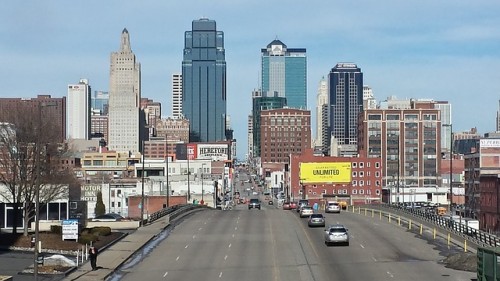We’ve already looked at the trend of millennials moving to smaller, less popular cities, but what are other cities doing to attract them?
Across the country, it’s becoming more and more popular for cities and business organizations to actively pursue the under-thirty demographic.
Some of the most aggressive include Kansas City, Mo., and Columbus, Ohio.
Both cities have dedicated websites with hip designs to show off what their city has to offer for millennials.
Kansas City is also pushing a lot of money downtown, to the tune of $5.5 billion in public and private projects, in order to improve the quality of life. It’s increased the number of people living in the central business district by about 50 percent since 2000, according to the New York Times.
Despite Ohio’s trouble with unemployment, Columbus grew four percent from 2010 to 2014, according to an article by Pew’s Stateline. This has happened during a push to create an image for Columbus in the minds of young people, which includes billboards in cities like Chicago and Washington, D.C.
Stateline quotes Amy Tillinghast, vice president of marketing for Experience Columbus, on their philosophy behind the move:
“This is an invitation to think about Columbus,” Tillinghast said. “We definitely want to be in people’s minds. If that image (they have of Columbus) is forward, younger and hipper and that there’s a lot going on here and there’s a lot of opportunity here and we’re a very cost-effective city, then so much the better.”
Stateline also looks at Detroit in its article, one of the cities hurting most in terms of unemployment and population. Activists in the city launched Write a House, which gave a way a house to a writer who wanted to live in Detroit.
Download our free guide to covering business on 17 beats.
Quicken Loans and Compuware launched a program to move employees downtown. Employees can receive incentives like $20,000 in a forgivable loan towards the purchase of a downtown residence and $2,500 for renting.
The program has brought in the young tech talent companies are looking for. So far it’s moved 12,500 employees and new hires to work in the downtown center, according to the article.
Some cities are less aggressive and long-standing civic structures help build its young population. That’s been especially true for Minneapolis.
Hennepin county saw a 25 percent spike in the population of its young people over the last seven years, according to the Star Tribune.
The Atlantic featured the city earlier this year and credits a “law requiring all of the region’s local governments—in Minneapolis and St. Paul and throughout their ring of suburbs—to contribute almost half of the growth in their commercial tax revenues to a regional pool, from which the money would be distributed to tax-poor areas.”
The article lists this pool as a possible reason why the area has developed into an attractive and affordable place for young people and larger employers looking for talent out of college.
Millennials are the hottest demographic for businesses to attract with their product, but the same is true for cities looking to prosper. No matter where you go in the country, making a community attractive for young people and families is always an important strategy for city governments.
From bike paths to improved public school programs for early childhood education, there are many things cities, both big and small, will do to attract young people.
Check out what’s happening in your area. Ask city officials or school board members if they’re focused on attracting millennials and ask what they plan to do to make the area attractive for young generations.
Newsrooms, you can also use the below infographic in your coverage.
Tomorrow, we’ll look at millennials’ interest in transit projects.
STORY IDEAS











